
Formula One's banning from 1989 of forced induction in favour of 3.5-litre naturally aspirated engines was expected to reignite the V8 versus V12 (up to 180°) firefight that had raged long before and for some time after - the turbos whistled in at the end of the 1970s. Honda and Renault, however, chose the relatively unexplored V10 route, seeking a better compromise between fuel economy and revs, punch and packaging. They would sweep the board in qualifying - it helped that Ayrton Senna was on board - and win 12 of that season's 16 Grands Prix.
Others followed: prescient independents Ilmor and John Judd's Engineering Developments were picked up by Mercedes-Benz and Yamaha; Peugeot joined in 1994, having twice won at Le Mans using a V10. The trickle became a flood. Though Honda, after 1992 and two seasons with a V12, and Renault (1997) departed the scene but kept their hands in via offshoots Mugen and Mecachrome - the 1998 F1 grid was chocka with V10 blocks, and the fact was made regulatory from 2000. BMW, in 2001, and Toyota, in 2002, having planned a V12, then mixed in.
Ford and Ferrari had stuck to their V8s and V12s - nomenclatures and noises that had forged their brands - until after the post-Ayrton concept for the new regulations. How best to package car and engine: total chassis stiffness, aerodynamics and agility. Before turbos, teams had mainly been private, without the resources of a major manufacturer, so they used a well developed V8 by Cosworth. They were used to it. But we had more freedoms.
"At the first V10 test at Silverstone, Ayrton was unhappy: 'Acceleration too sharp! Deceleration too sharp!' The difference in engine braking compared with a 1.5-litre turbo was huge: the car pitched in corners, balance changed and the driver was uncomfortable. We tried to make the delivery more progressive.
Bu hikaye Classic & Sports Car dergisinin April 2023 sayısından alınmıştır.
Start your 7-day Magzter GOLD free trial to access thousands of curated premium stories, and 9,000+ magazines and newspapers.
Already a subscriber ? Giriş Yap
Bu hikaye Classic & Sports Car dergisinin April 2023 sayısından alınmıştır.
Start your 7-day Magzter GOLD free trial to access thousands of curated premium stories, and 9,000+ magazines and newspapers.
Already a subscriber? Giriş Yap

RAY HILLIER
Double-chevron oddity proves a break from the norm for this Crewe specialist

SHORT BACK & GLIDES
Eccentric enthusiast Captain RG McLeod's series of Manx-tailed Bentley Specials reached its zenith with this unique S2 Continental.
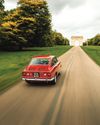
People's choice
The diminutive but multi-million-selling Fiat 850 packed a remarkable diversity of form and function into its compact footprint
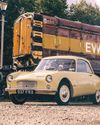
PLASTIC BREAKS FROM THE NORM
Glassfibre revolutionised niche car-body production, but just occasionally strayed into the mainstream.

A SENSIBLE SUPERCAR
The cleverly conceived four-seater Elite secured Lotus a place at the big players' table, but has it been unfairly maligned since then?

"I had a habit of grabbing second place from the jaws of victory"
From dreams of yachting glory to the Le Mans podium, via a stint at the top of the motorsport tree, Howden Ganley had quite the career
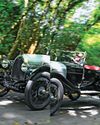
Still going strong
Herbert Engineering staked its reputation on the five-year warranty that came with its cars. A century on, this Two Litre hasn't made a claim
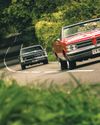
One for the kids
General Motors was aiming squarely at the youth market with the launch of the Pontiac GTO 60 years ago, and its runaway success popularised the muscle-car movement

A NEW BREED OF HERO
Launched at the turn of the millennium, the GT3 badge has already earned a place alongside RS, CS and turbo in Porsche lore.
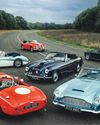
Brits with SIX appeal
The straight-six engine is synonymous with a decades-long legacy of great British sports cars. Six variations on the sextet theme convene for comparison